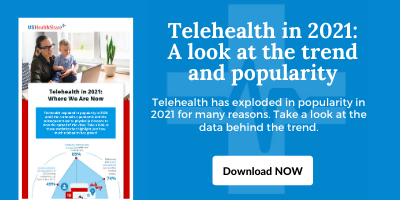As patients and healthcare practitioners play their part to help curb the spread of COVID-19, telehealth has emerged as a major player in the healthcare landscape. In fact, the use of telehealth has soared over the past year, and its use will likely continue to be strong even after the pandemic ends.
Telehealth promises more convenience when it comes to connecting patients and medical practitioners, especially in rural areas where access to healthcare facilities may be difficult. It’s also a more affordable alternative to in-person healthcare visits; patients can save anywhere from 10% to 15% when they connect with their doctors virtually instead of in-person.
So, who is using telehealth? Which demographic groups are making more use of virtual medical care in the US?
Marital status seems to play a role in how likely a person is to make use of telehealth services. According to Kantar, a data, insights and consulting company, unmarried individuals are more likely to connect with their healthcare providers virtually compared to those who are married. More specifically, 13.6% of non-married people are using telemedicine compared to 9.2% of married Americans.
Location and Telehealth
Telehealth services offer convenience to patients thanks to the lack of requirement to physically visit a medical office. There’s no need to travel to and from a medical facility to obtain medical advice or treatment in many cases. Yet, interestingly, the Kantar data shows that those who live in rural areas are less likely than urban dwellers to make use of telehealth services.
In particular, 11.7% of those who live in urban centers use telemedicine compared to 6.6% of rural residents.
Gender and Telehealth
Women also appear to be more receptive to telehealth compared to their male counterparts. Recent data shows that 12.2% of females are currently using telemedicine, compared to 8.8% of males.

Age and Telehealth
Considering the fact that telemedicine requires some knowledge and experience with digital technology, it may come as no surprise that younger Americans are more likely to use telehealth than older Americans. Just over 24% of those between the ages of 18 to 24 years use telehealth, compared to 11% and 5.4% of those between the ages of 45 to 64 and those over the age of 65, respectively.
Employment Status and Telehealth
Americans who are employed are more likely to use telemedicine than those who are unemployed. The Kantar data shows that those who are employed make the most use of telehealth at 14.2%, while 12.6% of those who have full-time jobs use telehealth. Unemployed individuals make the least use of telehealth, at 9.5%.
There is no question the use of telehealth is increasing and it is being embraced and adopted by more patients and clinicians alike. Those who appreciate the convenience of telehealth over in-person visits will likely continue to use telehealth services even after the current pandemic subsides.
Telehealth services are not as expensive as traditional doctor appointments, however a telehealth visit will still have an associated fee. While you may pay for these services out-of-pocket or have them covered by a health insurance plan, there are other options available to help cover telehealth and other health care costs.
More and more Americans are turning to health sharing ministries to help cover the increasing costs of medical care, and they’re saving money while doing so. Members of health sharing ministries can save anywhere from 30% to 40% compared to traditional health insurance. Find out more about your options, including health sharing programs, at USHealthShare. Speak with a representative today to share the health.


